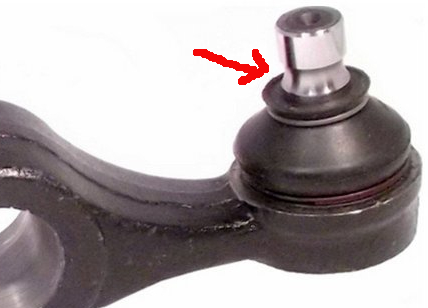The pinch bolt in the lower ball joint represents a critical weak point in the steering and suspension system. Despite its name, it doesn’t actually clamp the steering knuckle to the ball joint. Instead, it keeps the knuckle from slipping off by sliding across a groove in the ball joint. This blocks any upward or downward movement of the knuckle.
The two images below show the bolt hole on the steering knuckle. When the knuckle is properly positioned onto the lower ball joint, the groove on the ball joint aligns with the bolt hole, allowing the 10mm pinch bolt to slide through. If not aligned, the bolt cannot be inserted. Once the bolt is fully inserted and secured, it prevents the steering knuckle from separating from the ball joint—at least, that’s the intended function.
The amount of steel that extends into the bolt hole is only about half a millimeter—an alarmingly small margin given that it’s responsible for holding the entire steering knuckle in place. This weak point becomes even more problematic when the pinch bolt is reused multiple times. The pinch bolt is often hammered into position due to the difficulty of aligning the slot precisely. Each forced installation gradually shaves off material, reducing the bolt’s diameter and effectiveness. In my case, the bolt had worn down to nearly 9mm, severely compromising its grip on the ball joint. Eventually, the inevitable happened: during a sharp right turn, the right steering knuckle detached from the ball joint, and the axle pulled free from the transmission. The vehicle had to be towed, and even the tow truck required special equipment to deal with each front wheel pointing in a different direction.

To avoid this kind of failure, the pinch bolt should be replaced any time the ball joint is removed. It’s a cheap part, and any 10mm automotive-grade bolt will do—as long as it has an unthreaded shoulder to provide maximum contact and grip. In my case, one of the bolts was fully threaded, which caused it to wear down much faster. Not surprisingly, that was the side that ultimately failed.



Leave a Reply